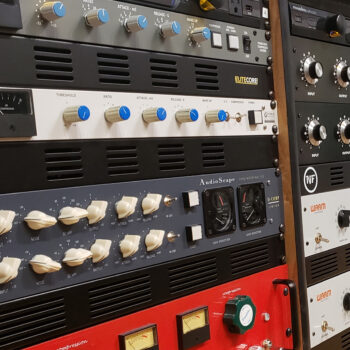
The 8-string guitar, a fascinating and relatively niche instrument in the world of guitar history, has evolved through various phases, each marked by technological advancements and musical innovations. Understanding its development requires exploring its origins, evolution, and influence on different genres of music.
Origins and Early Development
The concept of extending the number of strings on stringed instruments isn’t new. Historically, various cultures have experimented with multi-stringed instruments. For instance, ancient lute-like instruments and harpsichords had multiple strings to create richer sounds. However, the modern 8-string guitar’s development is a more recent phenomenon.
The earliest known 8-string guitars began appearing in the 19th century. They were part of a broader trend of expanding the range and versatility of stringed instruments. These early 8-string guitars were typically used in classical and folk music contexts. Their design often mirrored the traditional 6-string guitar but with additional strings to offer a broader range of pitches.
Early 20th Century Innovations
In the early 20th century, the 8-string guitar saw various innovations, especially within jazz and classical music. During this period, the 8-string guitar was predominantly used to enhance the harmonic capabilities of guitarists, allowing for more complex chord voicings and a wider tonal range.
Classical Music
In classical music, the 8-string guitar was employed to achieve a more resonant and fuller sound. The instrument was often used in solo performances and as part of chamber music ensembles. The additional strings allowed classical guitarists to explore a wider range of compositions and adapt works originally written for other instruments.
Jazz Influences
In jazz, the 8-string guitar found a niche within the genre’s burgeoning interest in exploring new harmonic and melodic possibilities. Jazz guitarists, seeking to expand their harmonic range, began experimenting with 8-string guitars. This period marked the initial exploration of the instrument in a genre that valued complex chord structures and intricate solos.
The Modern Era: Development and Popularity
The mid-to-late 20th century saw significant developments in the 8-string guitar, both in terms of design and its role in various music genres. This era marked the instrument’s transition from a niche curiosity to a more widely recognized tool in contemporary music.
Rock and Metal Evolution
The introduction of the 8-string guitar into rock and metal music represented a significant shift. In the 1980s and 1990s, progressive metal and other heavy genres began to adopt the instrument. The 8-string guitar allowed musicians to explore lower tunings and create more complex, aggressive, and technically challenging music.
Bands like Meshuggah and Korn were instrumental in popularizing the 8-string guitar in metal. Meshuggah, in particular, is known for their use of complex rhythms and time signatures, which the 8-string guitar facilitated by allowing for lower tunings and extended range. This period also saw the development of specialized 8-string guitar models designed specifically for metal musicians, with features like extended necks, high-output pickups, and durable construction to withstand the demands of heavy playing.
Extended Range and Technical Advances
In the 2000s and beyond, the 8-string guitar’s design continued to evolve. Modern 8-string guitars are often built with advanced materials and techniques, including carbon fiber necks, ergonomic body shapes, and sophisticated electronics. These advancements have made the instrument more versatile and accessible to a broader range of musicians.
The increased popularity of the 8-string guitar in various genres, including progressive rock, djent, and experimental music, has led to a greater variety of models and configurations. Guitarists now have access to a wide range of 8-string guitars tailored to different playing styles and preferences.
Notable 8-String Guitarists
Several influential guitarists have played a significant role in shaping the 8-string guitar’s development and popularization:
- Fredrik Thordendal of Meshuggah is renowned for his pioneering use of the 8-string guitar. His complex and innovative playing style has helped define the modern djent movement and showcased the 8-string guitar’s potential for creating intricate rhythms and textures.
- Munky and Head of Korn were among the first to bring the 8-string guitar into mainstream rock and nu-metal. Their use of the instrument in the 1990s helped popularize it within heavy music genres.
- Tosin Abasi, guitarist for Animals as Leaders, is known for his virtuosic playing and innovative approach to the 8-string guitar. His work has pushed the boundaries of what is possible on the instrument and influenced a new generation of guitarists.
Educational and Cultural Impact
The 8-string guitar’s impact extends beyond its technical and musical aspects. It has influenced educational approaches to guitar playing and contributed to the broader cultural landscape of modern music.
Educational Influence
The rise of the 8-string guitar has led to an increased focus on its technique and repertoire in guitar education. Many guitar instructors and educational resources now include sections dedicated to the 8-string guitar, offering lessons and materials for aspiring musicians. This has helped demystify the instrument and make it more accessible to a wider audience.
Cultural Impact
The 8-string guitar has also made its mark on popular culture. Its distinctive sound and appearance have been featured in various media, including music videos, albums, and live performances. The instrument’s role in shaping the sound of modern metal and progressive music has contributed to its recognition and appreciation among fans and musicians alike.
Future Prospects
Looking ahead, the 8-string guitar is likely to continue evolving as musicians explore new techniques and genres. The instrument’s versatility and ability to adapt to different musical styles suggest that it will remain a significant tool in contemporary music.
Advancements in technology and materials may lead to further innovations in 8-string guitar design. This could include improvements in playability, tuning stability, and tonal range, making the instrument even more versatile and appealing to a broader range of musicians.
Additionally, the increasing popularity of genres that embrace complex rhythms and extended range suggests that the 8-string guitar will continue to be a prominent fixture in modern music. As new generations of guitarists discover the possibilities of the 8-string guitar, its influence and role in shaping the future of music are likely to expand.
Conclusion
The history of the 8-string guitar is a testament to the instrument’s adaptability and its ability to meet the evolving needs of musicians. From its early origins in classical and folk music to its prominent role in modern rock and metal, the 8-string guitar has demonstrated its versatility and significance in the musical world.
The instrument’s development has been marked by innovations in design, advances in technology, and the creative contributions of influential guitarists. As the 8-string guitar continues to evolve, its impact on music is likely to grow, offering new possibilities and inspiring future generations of musicians.
- On 08/24/2024


